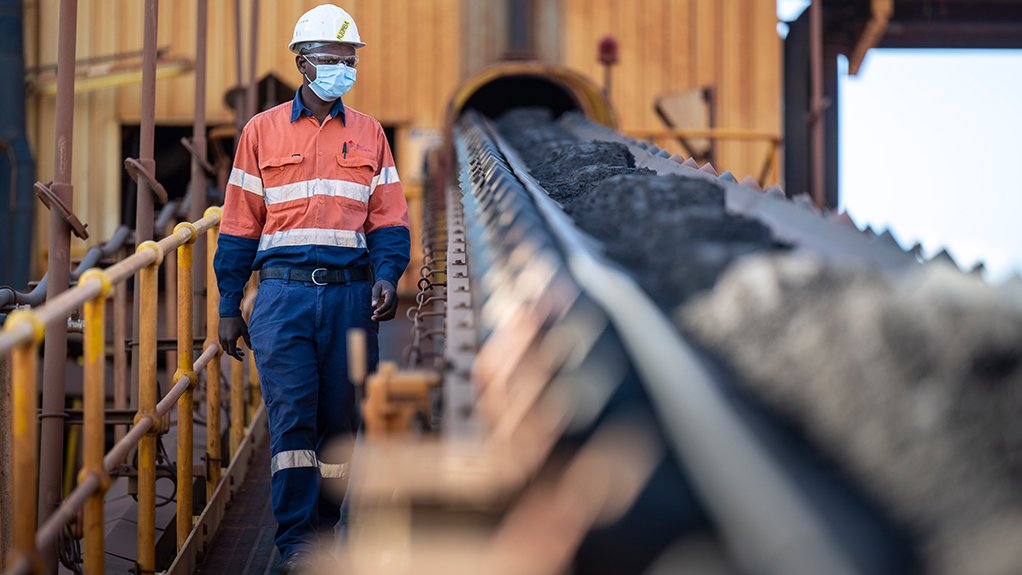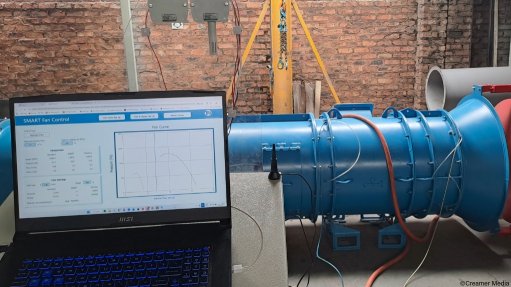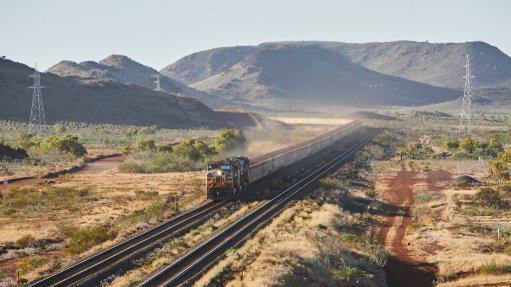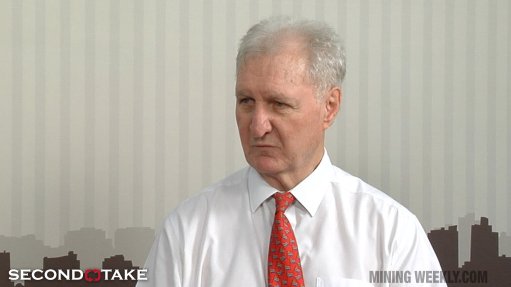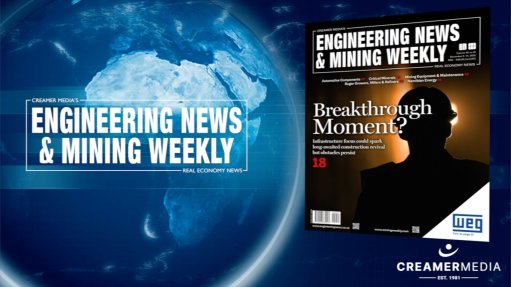Global materials sector contracts but profitability holds firm amid shift to gold, copper, aluminium – McKinsey
The global materials industry saw revenues decline in 2024, with metals and mining contracting by 6% to about $3-trillion, even as profitability remained strong and profit pools continued to shift from coal and steel toward gold, copper and aluminium, McKinsey’s ‘Global Materials Perspective 2025’ report, which was published on October 7, shows.
McKinsey said the materials industry overall contracted last year, but profitability held steady at about $1.3-trillion, with metals and mining contributing about $700-billion.
The firm noted that this resilience came despite a cyclical reset in commodity prices, particularly in thermal coal, steel and battery materials, following a period of volatility driven by energy market disruption and supply chain instability.
The report stated that 2024 still ranked among the sector’s four highest-earning years in the past two decades.
The report highlighted a series of major global shifts affecting the sector, including growing resource nationalism, rising protectionism, new demand drivers from AI and defence, emerging signs of a productivity rebound and a slowdown in decarbonisation efforts in some regions.
McKinsey said geopolitical focus on materials had intensified, with new tariffs, export barriers and investment incentives reshaping the global supply landscape. Many of these measures, the firm noted, targeted commodities deemed critical and highly concentrated in supply.
“Geopolitics and a global landscape where globalisation is changing but not disappearing have led to increased resource nationalism or protectionism. This has created additional risks, such as inaccessible end markets and the need for local supply integration, as well as opportunities, such as financial incentives for new projects in resource-importing regions,” the report said.
The consultancy found that African countries in particular had moved to impose export barriers on ores and concentrates in a bid to stimulate domestic downstream processing and retain more value locally.
Meanwhile, countries that were not self-sufficient had increased efforts to encourage local development through import barriers, resource development funds and strategic projects benefiting from faster permitting and improved access to financing. McKinsey also observed a trend toward strategic stockpiling to reduce the impact of potential supply chain disruptions.
At the same time, McKinsey said demand patterns were being reshaped by technological and geopolitical forces. Accelerated demand from the expansion of AI technologies was expected to have a “material impact” on future consumption, particularly for copper.
The firm projected that copper demand related to data centres could increase by about 3% by 2030, partially offsetting slower demand from some lower-carbon technologies.
According to McKinsey, a productivity and capital intensity rebound is also emerging in the mining sector, supported by new technologies and management practices, including generative AI, automation and next-generation operational systems.
“A recent capital intensity and productivity rebound is becoming visible in the mining industry – and several new technologies and practices have emerged that hold promise for continuing this trend, including generative AI,” the report said.
However, progress in decarbonisation had slowed in certain regions and commodities. McKinsey said battery electric vehicle sales in Europe and the US had flattened or decelerated as a share of total car sales compared with previous years.
The consultancy also noted that “decarbonisation is slowing in selected regions and commodities, most notably in the European steel industry, in which nearly a third of announced projects have been put on hold or cancelled”.
In contrast, thermal coal demand continued to rise, with record global production reaching eight-billion tonnes in 2024.
Despite these headwinds, the report said capital markets for materials companies had remained robust. Total shareholder returns grew 3.5 times and the sector’s market capitalisation had doubled since 2015.
Looking ahead, McKinsey projected that the demand outlook through 2035 remained strong across all scenarios. It said key drivers of growth included population expansion, the development of the global middle class and the roll-out of low-carbon technologies.
The consultancy estimates that materials linked to the energy transition will account for more than half of this growth, while new applications such as AI data centres and defence-related sectors will add further demand. McKinsey forecast that China and the rest of Asia could represent more than 45% of this total demand growth.
On the supply side, McKinsey said capacity increases had kept pace with expectations, with Chinese companies expanding their presence outside China. However, it warned that supply remained highly concentrated for several commodities, including rare earth elements (REEs), and that some markets continued to face structural constraints.
“Although the global supply–demand gap is narrowing, closing it completely could require trillions of dollars in investment, massive new power capacity and continued innovation,” the report said.
The report identified three main opportunities for industry players in the years ahead.
McKinsey said companies could pursue growth by expanding into new geographies and critical materials, capitalising on government incentives and unlocking value from recycling, scrap and high-growth niche sectors such as digital infrastructure and defence.
It added that firms should accelerate productivity through technologies such as generative AI and automation to counter rising costs, labour shortages and declining ore grades, while advancing cost-effective sustainability measures without relying on “green premiums”.
“As 30% to 50% of total shareholder return overperformance is driven by company operating decisions, top-quartile productivity and disciplined growth remain the clearest markers of long-term success, reflected in stronger margins, resilient returns and lasting competitiveness,” McKinsey said.
The report noted that, while challenges such as tightening supply–demand balances and tougher decarbonisation targets persisted, decisive innovation and disciplined operational strategies would shape future competitiveness.
McKinsey said success in the coming decade would depend on capturing growth opportunities, improving productivity and delivering sustainable solutions across the global materials value chain.
The company also noted that, although projected demand growth through 2035 for several commodities, including steel, copper and aluminium, had decreased compared with last year’s report, overall materials demand remained resilient, with the exception of metallurgical coal, iron-ore, and platinum group metals (PGMs).
The firm noted that energy transition materials continued to show strong momentum, with a projected compound annual growth rate of 4.5% through 2035. However, it said this momentum had been tempered by slower decarbonisation progress in some regions, which had placed downward pressure on demand for battery materials and REEs, alongside broader economic headwinds.
McKinsey added that defence spending and the expansion of data centres were likely to be major contributors to rising material demand in the coming years.
The consultancy said the global project pipeline for materials development indicated growth opportunities across regions over the next decade.
McKinsey observed signs of large-scale diversification, with changes in the top three supplying countries for more than half of the world’s largest commodities by revenue.
It noted that up to 60% of global reserves lay outside the top three producers, including 62% of copper, 44% of REEs and 36% of lithium, suggesting significant potential for future reserve development beyond projects already announced.
According to the report, forecast supply–demand balances for nickel and cobalt shifted in 2024 from projected shortages to possible surpluses.
McKinsey said a similar trend was emerging under high-case supply scenarios for other commodities, including uranium, REEs and manganese. The moderation of electric vehicle adoption had reduced demand for REEs, while China’s construction slowdown had weakened steel consumption, leading to lower demand for metallurgical coal and manganese.
Nonetheless, supply–demand imbalances are still expected to persist for most commodities, particularly under base-case assumptions, and for four commodities – metallurgical coal, silver, REEs and manganese – even under high-case supply conditions.
McKinsey compared the current market environment to the commodity supercycle of the early 2000s to early 2010s, which it said was characterised by massive investment and rising costs that produced limited production growth and declining productivity.
As commodity prices fell in the first half of the 2010s, mining companies shifted their focus to operational efficiency, concentrating on labour productivity to offset cost inflation – a strategy that, according to McKinsey, placed downward pressure on capital productivity.
The industry began to recover around 2018, although the Covid-19 pandemic temporarily interrupted that progress. Since then, productivity gains had extended beyond labour improvements to include capital efficiency and lower factor costs, supported by the accelerated adoption of automation and digital technologies.
The report said incentive prices for copper, nickel and lithium remained above current market levels needed to meet projected 2035 demand, leaving many new projects economically unviable under current conditions.
McKinsey said the gap could be addressed through improved productivity, commodity substitution or, in the longer term, the exploration of new projects.
According to McKinsey, next-generation technologies and operational excellence were opening new avenues for productivity improvement across the materials value chain.
It said traditional AI systems were advancing as computing costs declined, allowing for more sophisticated data integration. For example, such systems can reduce fuel consumption in mining fleets by up to 10% by linking fleet management, asset tracking, Internet-of-Things sensors and data on road quality and tyre pressure.
The report added that generative AI applications were increasingly being tailored to the materials sector, including real-time assistance in maintenance procedures, while automation was gaining appeal amid labour shortages – particularly in remote mining operations deploying autonomous haul trucks.
McKinsey also highlighted advances in electrification, such as the introduction of electric haul trucks and thermal storage systems, as well as the diversification of global equipment suppliers as nonincumbent players brought new, cost-competitive solutions to market. The firm said these developments could help offset cost inflation, enhance productivity and improve long-term competitiveness.
In its latest survey of materials buyers and sellers, McKinsey found a declining willingness among customers to pay premiums for low-carbon or “green” materials.
The share of respondents unwilling to pay any premium rose to about 50% for steel and copper, compared with about 35% and 40%, respectively, in 2024. Aluminium showed more stability, with about half of customers unwilling to pay extra.
McKinsey said this variation in willingness to pay highlighted the importance of customer segmentation when marketing sustainable materials, adding that “targeting the right customer segment with a win-win value proposition can improve the economics of decarbonisation business cases”.
The report also found that decarbonisation challenges are intensifying in Europe’s steel industry. McKinsey said that, as of the fourth quarter of 2024, about 40% of all direct reduced iron projects in the EU – representing 14-million tonnes of yearly capacity – had been suspended or cancelled.
Nearly 30% of low-carbon steelmaking projects have also been delayed or paused, underscoring the mounting pressures on the EU’s efforts to decarbonise its steel sector amid persistently low profit margins.
Looking ahead, McKinsey estimated that total metals and mining emissions could decline by about 6% over the next decade. By 2035, overall demand growth is expected to add about 620-million tonnes of CO₂-equivalent a year, mainly owing to the expansion of battery material production.
The consultancy said this increase could be offset by grid decarbonisation, which contributed about 40% of the reduction; efficiency improvements, contributing 30%; and greater recycling, contributing 20%, leading to an overall net emissions decrease.
Article Enquiry
Email Article
Save Article
Feedback
To advertise email advertising@creamermedia.co.za or click here
Press Office
Announcements
What's On
Subscribe to improve your user experience...
Option 1 (equivalent of R125 a month):
Receive a weekly copy of Creamer Media's Engineering News & Mining Weekly magazine
(print copy for those in South Africa and e-magazine for those outside of South Africa)
Receive daily email newsletters
Access to full search results
Access archive of magazine back copies
Access to Projects in Progress
Access to ONE Research Report of your choice in PDF format
Option 2 (equivalent of R375 a month):
All benefits from Option 1
PLUS
Access to Creamer Media's Research Channel Africa for ALL Research Reports, in PDF format, on various industrial and mining sectors
including Electricity; Water; Energy Transition; Hydrogen; Roads, Rail and Ports; Coal; Gold; Platinum; Battery Metals; etc.
Already a subscriber?
Forgotten your password?
Receive weekly copy of Creamer Media's Engineering News & Mining Weekly magazine (print copy for those in South Africa and e-magazine for those outside of South Africa)
➕
Recieve daily email newsletters
➕
Access to full search results
➕
Access archive of magazine back copies
➕
Access to Projects in Progress
➕
Access to ONE Research Report of your choice in PDF format
RESEARCH CHANNEL AFRICA
R4500 (equivalent of R375 a month)
SUBSCRIBEAll benefits from Option 1
➕
Access to Creamer Media's Research Channel Africa for ALL Research Reports on various industrial and mining sectors, in PDF format, including on:
Electricity
➕
Water
➕
Energy Transition
➕
Hydrogen
➕
Roads, Rail and Ports
➕
Coal
➕
Gold
➕
Platinum
➕
Battery Metals
➕
etc.
Receive all benefits from Option 1 or Option 2 delivered to numerous people at your company
➕
Multiple User names and Passwords for simultaneous log-ins
➕
Intranet integration access to all in your organisation



